A Crash Course in Robots with The Owl in the Rafters

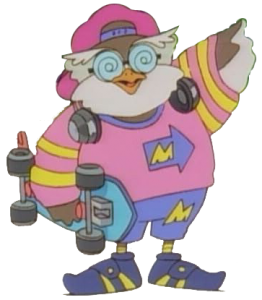 This month on The Owl in the Rafters, I’d like to start a two(maybe 3?) part review on a subject I’ve been keeping on the back burner for quite some time now. Let me start by saying that I am not an old man, I do not consider myself old, nor do I consider myself by any means “old school,” nor do I subscribe to the attitude that all “real” anime fans need to have a certain number of specific anime/manga under their belt before they can be let into the big boys’ club, but that doesn’t mean I don’t hold a special level of respect for the people out there who are willing to look into the history of anime/manga and dig around for all the real treasures out there, rather than just tuning into the boob-tube to brainlessly zone out once a week. Year after year, however, I find myself reminded of just how long ago some of the things I grew up with actually were, and just how many of them have gone from popular hits to obscure cult classics, swept away under the pretense of being out of date.
This month on The Owl in the Rafters, I’d like to start a two(maybe 3?) part review on a subject I’ve been keeping on the back burner for quite some time now. Let me start by saying that I am not an old man, I do not consider myself old, nor do I consider myself by any means “old school,” nor do I subscribe to the attitude that all “real” anime fans need to have a certain number of specific anime/manga under their belt before they can be let into the big boys’ club, but that doesn’t mean I don’t hold a special level of respect for the people out there who are willing to look into the history of anime/manga and dig around for all the real treasures out there, rather than just tuning into the boob-tube to brainlessly zone out once a week. Year after year, however, I find myself reminded of just how long ago some of the things I grew up with actually were, and just how many of them have gone from popular hits to obscure cult classics, swept away under the pretense of being out of date.
 The one big reminder I get of this is just how many anime fans I find have either never seen a Gundam series, or have only ever seen either New Mobile Report: Gundam Wing, or Mobile Suit: Gundam SEED. In recent years Mobile Suit: Gundam 00 has been added to that list, but its audience seems to be largely kids who started with SEED. While I’ve got nothing against the more recent Gundam series (Okay, so that’s a blatant lie, but I’ll hope you take my word for it when I say I don’t let that bias my overview of the whole franchise) the commonly cited popular Gundam titles in the US really do lack the heart and soul of the original franchise, and along with it a lot of its charm.
The one big reminder I get of this is just how many anime fans I find have either never seen a Gundam series, or have only ever seen either New Mobile Report: Gundam Wing, or Mobile Suit: Gundam SEED. In recent years Mobile Suit: Gundam 00 has been added to that list, but its audience seems to be largely kids who started with SEED. While I’ve got nothing against the more recent Gundam series (Okay, so that’s a blatant lie, but I’ll hope you take my word for it when I say I don’t let that bias my overview of the whole franchise) the commonly cited popular Gundam titles in the US really do lack the heart and soul of the original franchise, and along with it a lot of its charm.
I realize that the older Gundam titles can be a little hard to come by, but then I also realize that kids today are cruising the web with the proficiency I had as a teen at ages as young as 10 and 11, (I wish I were kidding, but you would be surprised what some little kids can do with a computer these days.) and places like e-bay are still a hustling bustling bazaar of random junk at reasonable prices. So, lack of access isn’t much of an excuse any more. However, other than just being “old” shows at this point in time, I’ve found that one of the biggest entry barriers to really getting into the Gundam franchise has been that kids today just don’t quite “get it.”
So, naturally this is where my love of contextual information and my articles entire gimmick comes into play. Today I’d like to give you a brief run down of the history of the Gundam franchise: what it did, how it did it, and why it was such a big deal. Along the way I’ll try to highlight its significance to anime as a subculture and as an industry, starting at the most logical point in Gundam‘s history, over 20 years before it was so much as an idea in the back of Yoshiyuki Tomino’s head.
I am referring to 1956, 23 years before the debut of the original Mobile Suit: Gundam in 1979, near the height of Osamu Tezuka’s career, and indeed prior to even the conception of anime as a real identifiable industry in Japan. It was in the decade from 1956 to 1966 that manga author and artist, Yokoyama Mitsuteru published the seminal Tetsujin 28-go (lit. “Iron Man No.28”), the first “super robot” manga.
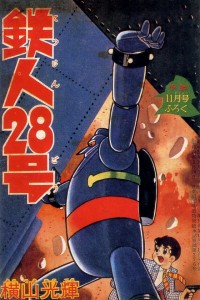 The Tetsujin 28-go manga was an instant success and come the dawn of the anime industry in the 60s, it became one of the earliest japanese animated TV programs, following only a few months after Osamu Tezuka’s world famous Tetsuwan Atom in 1963. It was also the basis of the Gigantor localization that aired in the US in 1964. The same English adapted version was also broadcast in Australia and New Zealand in 1968. Other than the usual measures of success it has also seen 1 live action TV series in 1960, 4 different animated TV series between 1963 and 2004(totaling 221 episodes), and both a live action and animated feature film in 05 and 07, respectively.
The Tetsujin 28-go manga was an instant success and come the dawn of the anime industry in the 60s, it became one of the earliest japanese animated TV programs, following only a few months after Osamu Tezuka’s world famous Tetsuwan Atom in 1963. It was also the basis of the Gigantor localization that aired in the US in 1964. The same English adapted version was also broadcast in Australia and New Zealand in 1968. Other than the usual measures of success it has also seen 1 live action TV series in 1960, 4 different animated TV series between 1963 and 2004(totaling 221 episodes), and both a live action and animated feature film in 05 and 07, respectively.
In America the various anime series have been dubbed and retitled under the more familiar Gigantor name; in 1990 the entire series got colorized and in now available in color in a DVD box set; in 2000 there was a 12 issue Gigantor comic book published by Antarctic Press; and over the years the thundering theme song, self-titled, “Gigantor,” has been a subject of the occasional pop culture reference as an icon of 60s children’s television, eclipsing even Astroboy in the role.
Tetsujin 28‘s story was fairly straight forward: the young hero, Kaneda Shotaro, is the son of a military scientist who was tasked with creating a super weapon to win WWII for Japan, but by the time he finishes his working model of the Tetsujin No.28, the war is already over. Shotaro inherits the remote control to his father’s super weapon and instead of fighting the Americans in war, he uses the super robot to fight the forces of evil lurking in the underworld of Japan.
 Yokoyama Mitsuteru also went on to create another well loved classic, the somewhat obviously named, Giant Robo in 1967 following the end of Tetsujin 28. The Giant Robo manga was in fact spawned from a commissioned premise for a live-action kids’ show (see my tokusatsu article for more details) which followed the initial publication of the manga by just a few months. Unlike Tetsujin No.28, who would take his orders from whoever held his remote control, Giant Robo was himself a force of good and would only follow commands from a young heroic boy named Kusama Daisaku. Together with his boy pilot, Giant Robo wages war against the evil organization, Big Fire, and their invasion force of giant robots.
Yokoyama Mitsuteru also went on to create another well loved classic, the somewhat obviously named, Giant Robo in 1967 following the end of Tetsujin 28. The Giant Robo manga was in fact spawned from a commissioned premise for a live-action kids’ show (see my tokusatsu article for more details) which followed the initial publication of the manga by just a few months. Unlike Tetsujin No.28, who would take his orders from whoever held his remote control, Giant Robo was himself a force of good and would only follow commands from a young heroic boy named Kusama Daisaku. Together with his boy pilot, Giant Robo wages war against the evil organization, Big Fire, and their invasion force of giant robots.
 The Giant Robo manga itself ran for only a year or so, until 1968, and wasn’t actually adapted into an anime until the 1990 Giant Robo: The Day the Earth Stood Still OVA (aka Giant Robo: The Animation), which has since been dubbed and released in an English language DVD box set. Oddly, the OVA is actually a massive tribute to Yokoyama Mitsuteru, referencing a large portion of his popular works (mostly from shows and manga that never saw English translations) as his many hero characters band together to fend off a world threatening menace.
The Giant Robo manga itself ran for only a year or so, until 1968, and wasn’t actually adapted into an anime until the 1990 Giant Robo: The Day the Earth Stood Still OVA (aka Giant Robo: The Animation), which has since been dubbed and released in an English language DVD box set. Oddly, the OVA is actually a massive tribute to Yokoyama Mitsuteru, referencing a large portion of his popular works (mostly from shows and manga that never saw English translations) as his many hero characters band together to fend off a world threatening menace.
 Strangely enough though, well before the anime was ever made or translated, the live action series that aired along side the manga was dubbed and aired on US television in 1969 under the name, Johnny Sokko and His Flying Robot. (which is totally available on Hulu btw) Despite the fact that the title has faded into obscurity by this point, it actually saw great reception from its US audience and saw regular broadcast on syndicated television frequently all throughout the 70s and even into the early 80s. Several episodes of the American dubbed TV series were also edited together into the made for TV movie, Voyage Into Space in 1970 which is still something of a cult classic among older anime and sci-fi fans in America.
Strangely enough though, well before the anime was ever made or translated, the live action series that aired along side the manga was dubbed and aired on US television in 1969 under the name, Johnny Sokko and His Flying Robot. (which is totally available on Hulu btw) Despite the fact that the title has faded into obscurity by this point, it actually saw great reception from its US audience and saw regular broadcast on syndicated television frequently all throughout the 70s and even into the early 80s. Several episodes of the American dubbed TV series were also edited together into the made for TV movie, Voyage Into Space in 1970 which is still something of a cult classic among older anime and sci-fi fans in America.
If you hadn’t guessed, Giant Robo was a key influences in the overall design of the Big O anime, specifically the use and style of the wrist watch remote control.
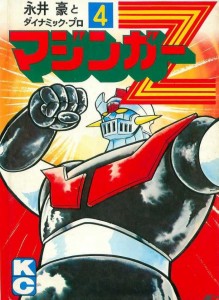 Moving along, in 1972, Go Nagai created a manga known as Mazinger Z, and in that same year the anime of the same name premiered on TV. Like both of the giant robot shows I’ve already mentioned, Mazinger Z was eventually picked up by American television in 1985 and aired under the name, Tranzor Z. Even before that however, the series made appearances with varying impact on Italian, Spanish, French, Puerto Rican, Mexican, and South American television throughout the late 70s and 80s. In many of those countries, the name still maintains a surprisingly strong nostalgic draw and a loyal cult following of fans that grew up with the show. As a testament to its popularity, the first international broadcast of the original 72 anime was in 1978 in Spain, and yet over 30 years later, the most recent broadcast started in 2009, in Ecuador, and is to the best of my knowledge still running.
Moving along, in 1972, Go Nagai created a manga known as Mazinger Z, and in that same year the anime of the same name premiered on TV. Like both of the giant robot shows I’ve already mentioned, Mazinger Z was eventually picked up by American television in 1985 and aired under the name, Tranzor Z. Even before that however, the series made appearances with varying impact on Italian, Spanish, French, Puerto Rican, Mexican, and South American television throughout the late 70s and 80s. In many of those countries, the name still maintains a surprisingly strong nostalgic draw and a loyal cult following of fans that grew up with the show. As a testament to its popularity, the first international broadcast of the original 72 anime was in 1978 in Spain, and yet over 30 years later, the most recent broadcast started in 2009, in Ecuador, and is to the best of my knowledge still running.
 To be clear, the Mazinger franchise actually covers 3 manga series that make up the core trilogy (Mazinger Z, Great Mazinger, and UFO Robot Grendizer) as well as a US comic book, 7 additional manga series, an anime remake of the original story that came out in 2009 titled, Shin Mazinger Shougeki! Z Hen, as well as an anime series based off the manga God Mazinger, and Mazinkaizer SKL. The many robots of the Mazinger franchise have remained some of the most iconic super robots in not only Japan, but the Americas and parts of Europe as well.
To be clear, the Mazinger franchise actually covers 3 manga series that make up the core trilogy (Mazinger Z, Great Mazinger, and UFO Robot Grendizer) as well as a US comic book, 7 additional manga series, an anime remake of the original story that came out in 2009 titled, Shin Mazinger Shougeki! Z Hen, as well as an anime series based off the manga God Mazinger, and Mazinkaizer SKL. The many robots of the Mazinger franchise have remained some of the most iconic super robots in not only Japan, but the Americas and parts of Europe as well.
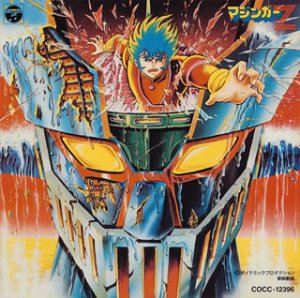 The original Mazinger Z series followed the story of Kouji Kabuto, grandson of professor Juzo Kabuto, creator of the Mazinger Z robot. (does that set up sound familiar?) The late professor created the titular fighting machine as a means to defend the world from the ambitions of the megalomaniacal Dr. Hell and his army of remote controlled Mechanical Beasts. While the plot itself was fairly straight forward in the first series, and the story also pretty cut and dry, one of the big contributions to the genre was that the Mazinger Z was a piloted robot and not remote controlled. This show single handedly invented the concept of the vehicular combat robot, instead of the remotely assisted automaton, which really put the young boy hero character right where the action was. While we may take that sort of thing for granted now, that small added element was at the time a serious game changer.
The original Mazinger Z series followed the story of Kouji Kabuto, grandson of professor Juzo Kabuto, creator of the Mazinger Z robot. (does that set up sound familiar?) The late professor created the titular fighting machine as a means to defend the world from the ambitions of the megalomaniacal Dr. Hell and his army of remote controlled Mechanical Beasts. While the plot itself was fairly straight forward in the first series, and the story also pretty cut and dry, one of the big contributions to the genre was that the Mazinger Z was a piloted robot and not remote controlled. This show single handedly invented the concept of the vehicular combat robot, instead of the remotely assisted automaton, which really put the young boy hero character right where the action was. While we may take that sort of thing for granted now, that small added element was at the time a serious game changer.
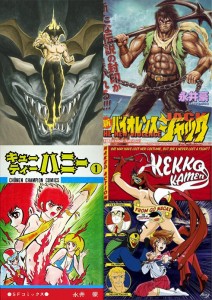 For those who are not familiar with his work, Go Nagai is famous for his extreme uses of gratuitous action, violence, and occasional gore and nudity that really pushed the envelope of what was acceptable in the medium back during the 70s. It was the very fact that a giant robot series was being written by Go Nagai of all people that proved the Mazinger franchise’s second big contribution to the genre. In the case of his giant robot work in general, Go Nagai can easily be cited as the sole foundation of the hot-blooded, kick reason to the curb style action hero that made shows like Tengen Toppa Gurren Lagann so popular in the mid-late 2000s when the hot blooded hero has long since gone out of fashion, making it a new and exciting concept for younger audiences, and a refreshing blast from the past for older fans.
For those who are not familiar with his work, Go Nagai is famous for his extreme uses of gratuitous action, violence, and occasional gore and nudity that really pushed the envelope of what was acceptable in the medium back during the 70s. It was the very fact that a giant robot series was being written by Go Nagai of all people that proved the Mazinger franchise’s second big contribution to the genre. In the case of his giant robot work in general, Go Nagai can easily be cited as the sole foundation of the hot-blooded, kick reason to the curb style action hero that made shows like Tengen Toppa Gurren Lagann so popular in the mid-late 2000s when the hot blooded hero has long since gone out of fashion, making it a new and exciting concept for younger audiences, and a refreshing blast from the past for older fans.
The Mazinger franchise also coined the phrase Super Robot, which I’ll come back to a little later, toward the end of this article.
 Speaking of Tengen Toppa Gurren Lagann however, Go Nagai is of course known for many, many other manga and anime, but one other very significant contribution he made to the giant robot genre is the Getter Robo franchise, which he co-created with Ken Ishikawa. Like Mazinger Z the Getter Robo was a piloted robot, rather than a remote controlled one, but this time around the big game changer that Nagai brought to the table was that of the combining and transforming super robot.
Speaking of Tengen Toppa Gurren Lagann however, Go Nagai is of course known for many, many other manga and anime, but one other very significant contribution he made to the giant robot genre is the Getter Robo franchise, which he co-created with Ken Ishikawa. Like Mazinger Z the Getter Robo was a piloted robot, rather than a remote controlled one, but this time around the big game changer that Nagai brought to the table was that of the combining and transforming super robot.
The Getter Robo was in fact three fighter jets that could combine into any of three different robots based on what order the jets combined in, and each of the three robots had a different function: the Getter 1 was the iconic red form outfitted for aerial combat and armed with the Getter Tomahawk; the Getter 2 was white, thin and tall, with a pointed head and a drill on one arm, designed for underwater combat; and finally the Getter 3 was the yellow, broad heavy artillery and tread bottomed land combat form.
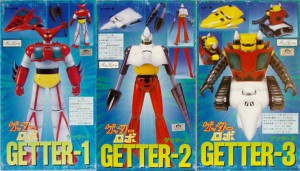 The story placed the Getter jets into the hands of three teenagers with conflicting temperaments: the brave and passionate karate ace, Ryoma (pilot of Getter 1); the cynical and lonesome bad boy heart throb of the team, Hayato (pilot of Getter 2); and the comical ad earnest but a bit dim witted heavy weight judo captain, Musashi. (pilot of Getter 3) Together they utilize the Getter Robo, a super robot powered by the mysterious and powerful getter radiation, to combat the returning threat of the Dinosaur Empire and their invasion force of Mechasaurus, come to reclaim the surface world stolen from them by the mammals in days long past. I just want to say that this is easily my favorite premise for an evil empire/organization in anything ever. Let me reiterate: they are dinosaurs(some humanoid, some not) that were driven underground where they live in the molten core of the earth, who have developed super science in the form of weapons and cybernetics, and now want to invade the surface world with giant robotic dinosaurs armed with lasers, missiles, and other weapons of mass destruction. Let that image just sort of sit with your for a little bit.
The story placed the Getter jets into the hands of three teenagers with conflicting temperaments: the brave and passionate karate ace, Ryoma (pilot of Getter 1); the cynical and lonesome bad boy heart throb of the team, Hayato (pilot of Getter 2); and the comical ad earnest but a bit dim witted heavy weight judo captain, Musashi. (pilot of Getter 3) Together they utilize the Getter Robo, a super robot powered by the mysterious and powerful getter radiation, to combat the returning threat of the Dinosaur Empire and their invasion force of Mechasaurus, come to reclaim the surface world stolen from them by the mammals in days long past. I just want to say that this is easily my favorite premise for an evil empire/organization in anything ever. Let me reiterate: they are dinosaurs(some humanoid, some not) that were driven underground where they live in the molten core of the earth, who have developed super science in the form of weapons and cybernetics, and now want to invade the surface world with giant robotic dinosaurs armed with lasers, missiles, and other weapons of mass destruction. Let that image just sort of sit with your for a little bit.
Getter Robo may be the one giant robot series to rival if not surpass Mazinger Z within Nagai’s library of work. The franchise as a whole has seen major appearances in at least 9 different anime series, a dozen manga series, and has been the subject of many giant robot tributes and pop-culture references in other anime and manga over the years. I should note however that, unfortunately, not every Getter Robo series following the original pit the heroic pilot trio against robotic dinosaurs.
I mentioned earlier that Nagai’s general body of work lent itself to the image Tengen Toppa Gurren Lagann strove to emulate, but Getter Robo in particular was one of the key inspirations behind Tengen Toppa Gurren Lagann. Namely the concept of a robot directly powered by sheer determination and force of will was one of Getter Robo’s big calling cards, and a key component borrowed for Tengen Toppa Gurren Lagann. Incidentally he also more or less invented the rocket/missile punch cliche, which isn’t as significant to over all development of the franchise, but has since been a sturdy cornerstone of giant robots.
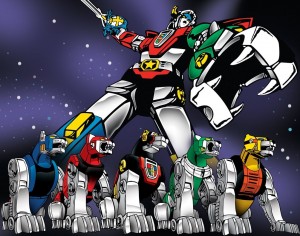 So far we’ve seen the giant robot genre transform from the lumbering remote controlled metal goliath of the 50s and 60s, the dawn of the piloted vehicular robot along with the concept of combining multi-sectioned robots in the 70s, and also the introduction of the robot that doubles as a jet plane in Getter Robo, which we will come back to when a few more key shows establish the jet as a reoccurring motif. The next step in the transformation of the giant robot in anime takes us in a strange direction from a hop, to a skip, to now a leap. The vehicular elements of Nagai’s giant robots, as well as the combining element of Getter Robo are taken out of Nagai’s hands and taken to a logical extreme: the birth of the archetypical Voltron/Megazord style 5-piece giant robot.
So far we’ve seen the giant robot genre transform from the lumbering remote controlled metal goliath of the 50s and 60s, the dawn of the piloted vehicular robot along with the concept of combining multi-sectioned robots in the 70s, and also the introduction of the robot that doubles as a jet plane in Getter Robo, which we will come back to when a few more key shows establish the jet as a reoccurring motif. The next step in the transformation of the giant robot in anime takes us in a strange direction from a hop, to a skip, to now a leap. The vehicular elements of Nagai’s giant robots, as well as the combining element of Getter Robo are taken out of Nagai’s hands and taken to a logical extreme: the birth of the archetypical Voltron/Megazord style 5-piece giant robot.
The most significant name I can bring up here would have to be Saburo Yatsude. In the US in particular, Saburo is a name best known (when known at all) for being the name behind Beast King Golion, the anime series that later became the iconic face of Voltron: Defender of the Universe, specifically the lion form of the first season. Saburo was also behind the Armored Fleet Dairugger XV anime that would became “Vehicle Voltron,” and as the name suggests, involved a giant robot made up of 15 different smaller machines. However, the Beast King Golion anime came out in 1981, and Armored Fleet Dairugger XV followed immediately after in 1982, but there was a larger and better known franchise that came before it that really established the 5-piece combining robot in the giant robot genre, what is generally known as the Robot Romance Trilogy starting with a series called Super Electromagnetic Robo Combattler V. Combattler V would be the first of a long line of truly colossal combination robots under the Saburo name. (As a small aside, Saburo Yatsude is not actually a real person, but a moniker attributed to Toei Co. and their television producers, under which their collective input on their shows is branded.)
and as the name suggests, involved a giant robot made up of 15 different smaller machines. However, the Beast King Golion anime came out in 1981, and Armored Fleet Dairugger XV followed immediately after in 1982, but there was a larger and better known franchise that came before it that really established the 5-piece combining robot in the giant robot genre, what is generally known as the Robot Romance Trilogy starting with a series called Super Electromagnetic Robo Combattler V. Combattler V would be the first of a long line of truly colossal combination robots under the Saburo name. (As a small aside, Saburo Yatsude is not actually a real person, but a moniker attributed to Toei Co. and their television producers, under which their collective input on their shows is branded.)
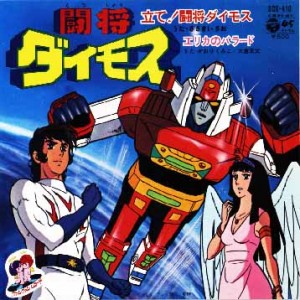 I mentioned before that Combattler V was part of a trilogy, and of the two shows that followed, (Super Electromagnetic Machine Voltes V and Brave Leader Daimos) only Voltes V ever saw international broadcast –Although Matel toys did release action figures from all three shows under their Shogun Warriors line. The original Voltes V aired in 1977, and the Philippines began airing an English dub in 1978, but the American English dub wouldn’t show up in America until 1983 under the name Voltus 5 as a short film.
I mentioned before that Combattler V was part of a trilogy, and of the two shows that followed, (Super Electromagnetic Machine Voltes V and Brave Leader Daimos) only Voltes V ever saw international broadcast –Although Matel toys did release action figures from all three shows under their Shogun Warriors line. The original Voltes V aired in 1977, and the Philippines began airing an English dub in 1978, but the American English dub wouldn’t show up in America until 1983 under the name Voltus 5 as a short film.
 I’ll admit I never actually got to watch all of the Robot Romance Trilogy, so I can’t lend very much insight, although I have seen a good portion of Voltes V and what impressed me most was that beneath all the giant robot fights, elaborate toy selling weapons arsenal, and monster of the week formula there was actually a surprisingly intriguing story to it all.
I’ll admit I never actually got to watch all of the Robot Romance Trilogy, so I can’t lend very much insight, although I have seen a good portion of Voltes V and what impressed me most was that beneath all the giant robot fights, elaborate toy selling weapons arsenal, and monster of the week formula there was actually a surprisingly intriguing story to it all.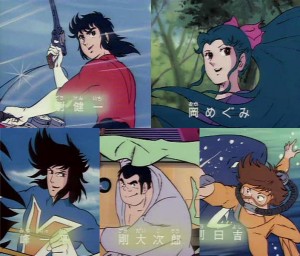 While the basic premise sets up a familiar conflict of “aliens are invading Earth, the heroes must defend it!” the domestic drama of the royal family leading the alien invasion proved to make the prince leading the alien invasion an almost noble villain instead of the stock and standard evil incarnate archetype more common to the genre. On top of that, the characters are comprised of 3 brothers, their sister, and an orphaned boy taken in by the Voltes V project. It doesn’t take long for the characters to start butting heads (seriously it starts in ep.3) and despite being what we would now consider an old fashioned show, and one aimed very much at a young child audience, it takes its character drama every seriously and contrives some very convincing conflicts between the heroes.
While the basic premise sets up a familiar conflict of “aliens are invading Earth, the heroes must defend it!” the domestic drama of the royal family leading the alien invasion proved to make the prince leading the alien invasion an almost noble villain instead of the stock and standard evil incarnate archetype more common to the genre. On top of that, the characters are comprised of 3 brothers, their sister, and an orphaned boy taken in by the Voltes V project. It doesn’t take long for the characters to start butting heads (seriously it starts in ep.3) and despite being what we would now consider an old fashioned show, and one aimed very much at a young child audience, it takes its character drama every seriously and contrives some very convincing conflicts between the heroes.
 This same trend of course spread into the previously mentioned Tokusatsu genre of live action television, starting with Toei’s Spider-Man TV series in which a very different version of Mavel comic’s Spiderman character fought against the Iron Cross Army in order to avenge the death of his father. More importantly however, was the inclusion of his transforming giant robot, the Leopardon. The early Super Sentai series (the Japanese show that Saban would later buy rights to in order to produce their Power Rangers franchise) starting with Battle Fever J also utilized giant robots, and starting with Hikari Sentai Maskman the five part combining robot became the now iconic staple of the Super Sentai franchise and by extension the Power Rangers franchise in America. However, that wouldn’t happen until 1987.
This same trend of course spread into the previously mentioned Tokusatsu genre of live action television, starting with Toei’s Spider-Man TV series in which a very different version of Mavel comic’s Spiderman character fought against the Iron Cross Army in order to avenge the death of his father. More importantly however, was the inclusion of his transforming giant robot, the Leopardon. The early Super Sentai series (the Japanese show that Saban would later buy rights to in order to produce their Power Rangers franchise) starting with Battle Fever J also utilized giant robots, and starting with Hikari Sentai Maskman the five part combining robot became the now iconic staple of the Super Sentai franchise and by extension the Power Rangers franchise in America. However, that wouldn’t happen until 1987.
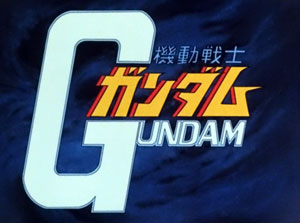 The last of the Robot Romance Trilogy series was Brave Leader Daimos, which ran from 1978 until 1979. This of course brings us right to where we need to be, because it was in 1979 that the original Mobile Suit Gundam series aired on Japan’s Nagoya Broadcasting Network and changed the giant robot genre forever by dividing it into the “Super Robot” and “Real Robot” sub-genres, with all of the series I’ve mentioned up until now falling into the Super Robot category. The Real Robots will have to wait for another time however, because this article has gotten to be plenty long on its own. Next time I’ll try to cover the bulk of the early Gundam franchise, and if I can fit it in, some of the repercussions of the title’s success on the popular trends in anime and manga, including both those that impacted the industry then, and those that have continued to shape the industry even today. So, if you want to read more about the history of the Gundam franchise and the giant robot genre in general, stay tuned to The Owl in the Rafters!
The last of the Robot Romance Trilogy series was Brave Leader Daimos, which ran from 1978 until 1979. This of course brings us right to where we need to be, because it was in 1979 that the original Mobile Suit Gundam series aired on Japan’s Nagoya Broadcasting Network and changed the giant robot genre forever by dividing it into the “Super Robot” and “Real Robot” sub-genres, with all of the series I’ve mentioned up until now falling into the Super Robot category. The Real Robots will have to wait for another time however, because this article has gotten to be plenty long on its own. Next time I’ll try to cover the bulk of the early Gundam franchise, and if I can fit it in, some of the repercussions of the title’s success on the popular trends in anime and manga, including both those that impacted the industry then, and those that have continued to shape the industry even today. So, if you want to read more about the history of the Gundam franchise and the giant robot genre in general, stay tuned to The Owl in the Rafters!



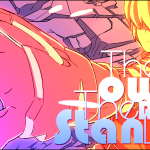
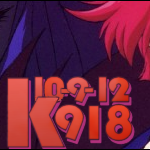
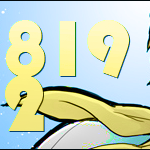










Chicks dig giant robots
Getter Robot isn’t by Go Nagai. It’s by his assistant, Ken Ishikawa. The writer of Gurren Lagann, Nakashima was actually the chief editor on Getter Robot Saga, a compilation of all the Getter Robot manga arcs over the years by Ishikawa. And of course, he’s a really big fan.
>Namely the concept of a robot directly powered by sheer determination and force of will was one of Getter Robo’s big calling cards, and a key component borrowed for Tengen Toppa Gurren Lagann
That’s not true at all. Getter Robot isn’t powered by will and sheer determination. It’s powered by Getter Energy. The similar thing you’re looking for is Getter Rays (unrefined Getter Energy) which causes evolution just like Spiral Energy.
I’m aware that Ken Ishikawa was largely responsible for Getter Robo as a co-creator but it still falls under Go Nagai’s body of work. It was not a case of 100% ghost writing however and there’s no really way to cleanly separate exactly who did what throughout the franchise. In the specific context of this article I just stuck with Nagai for the sake of simplicity to transition from Mazinger into Getter Robo. It’s only supposed to be a brief history of super robots as a genre, not an in depth history on any one series. I will edit his name in however because even if he’s done next to nothing that anyone reading this article could then look up and watch/read, it does seem unfair to give Nagai sole credit for what was easily the biggest accomplishment in Ishikawa’s career.
I’m also aware of the history behind Nakashima’s career, but that’s mostly irrelevant to the what I was trying to cover here. The TTGL comments I sprinkled throughout were really just name drops for the sake of relating this whole spiel back to an audience that I assumed would be more familiar with TTGL than with any pre-2000 titles. TTGL doesn’t exactly fall into the history of the development of the Real Mecha genre after all.
Lastly, I didn’t mean “directly powered by” in the sense that it ran on will power the way a car runs on fuel, if that is what you thought I meant. Both the Getter rays and Spiral power were manifestations of/manifested through will power in their respective stories and powered up the heroes in their final battles: In both cases willpower went in the machine and power ups came out the other side. The point was just to draw the parallel between the Getter rays and Spiral power without dumping series specific jargon on anyone who might not be familiar with one or the other, or both.
Sorry for the somewhat long reply, but I hope that cleared some things up.
Gurren Lagann is my favorite Giant Robot anime by far but there will always be a place in my heart for the Gundam series (or at least the early Gundam)
[…] or this would somehow be in even worse taste than it already is. I know I’m leaving the Robot Review pt.2: Giant Electric Boogaloo readers hanging here, and I know I’ve already pulled this trick […]
[…] back to the Owl in the Rafters’ Crash Course in Giant Robots: Round 2. Last time, I tried to go over as briefly as possible, the major stepping stones in the development of the […]
This article is amazing. I was aware of bits and pieces of the Mecha Genre history, but it’s awesome to see it all in one place for the sake of coherence. I liked it a lot, and I’ve shared it with a couple people! I can’t wait for the next installment to see you cover the Gundam series in general.
It’s become a source of frustration for me to speak with recent Gundam fans who write the early series off as “too old”. ;__;